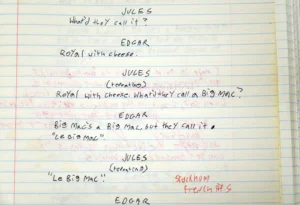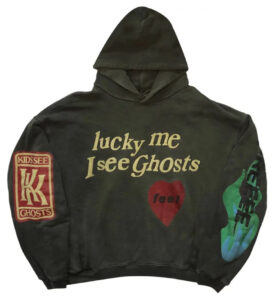Tomoya Nakano, a rising star in the world of contemporary art, has garnered international attention for his innovative approach to reinterpreting historical figures through mixed-media painting. His portrait of George Washington, the first President of the United States, is a masterclass in blending traditional artistry with modern techniques. Employing a dynamic combination of oil, acrylic, and spray paints, Nakano offers a fresh, thought-provoking perspective on one of history’s most iconic leaders.
The Convergence of Art and History
Historical portraiture often carries the weight of reverence, serving as a means to memorialize and venerate influential figures. Tomoya Nakano, however, challenges these conventions. His work transforms traditional portraiture into a vibrant, multilayered exploration of history’s relevance in the modern world.
In George Washington, Nakano captures more than the visage of America’s founding father. By layering acrylic and oil paints with bursts of spray paint, Nakano’s work feels alive, dynamic, and textured, suggesting that the legacy of historical figures like Washington continues to evolve.
A Mixed-Media Approach
Nakano’s choice of materials—oil, acrylic, and spray paints—allows him to experiment with texture, depth, and color in ways that traditional portraiture cannot achieve. Each medium contributes uniquely to the composition:
Oil Paints: Provide a rich, classic foundation reminiscent of 18th-century portraiture, grounding the piece in its historical roots.
Acrylic Paints: Add vibrant, modern hues, injecting energy and vitality into the work.
Spray Paint: Introduces an urban, contemporary aesthetic, reflecting the fast-paced, ever-changing cultural landscape.
This blend of techniques creates a striking contrast between the classical and the contemporary, reinforcing Nakano’s overarching theme of historical relevance in modern times.
Layering Symbolism
Nakano’s use of layering isn’t just aesthetic—it’s deeply symbolic. The overlapping textures and colors in George Washington suggest the layers of meaning and interpretation that have been applied to Washington’s legacy over the centuries. The interplay between the mediums mirrors the complexities of historical memory and the evolving narratives surrounding the founding father.
Color Palette and Symbolism
One of the most compelling aspects of Nakano’s George Washington is his bold use of color. Unlike traditional portraits that often adhere to muted, realistic tones, Nakano’s palette is deliberately vivid and abstract.
•Red and Blue Accents: Represent the United States’ national colors, emphasizing Washington’s role as a symbol of American identity.
•Gold Highlights: Convey a sense of regality and leadership, reinforcing Washington’s iconic status.
•Dynamic Splashes: Abstract bursts of color, created with spray paint, suggest movement and change, underscoring the idea that history is not static but fluid.
This color scheme not only captures Washington’s historical significance but also reimagines his image in a way that feels fresh and relevant to contemporary audiences.
A Contemporary Take on George Washington
Nakano’s George Washington challenges the viewer to reconsider their understanding of the first President. By blending classical and modern elements, Nakano encourages a dialogue between past and present, inviting viewers to reflect on how historical figures are represented and remembered.
Breaking Tradition
Traditional portraits of Washington often depict him as stoic, reserved, and almost mythic in stature. Nakano’s interpretation, by contrast, humanizes Washington while simultaneously elevating him to an emblem of cultural dialogue.
Engaging a New Generation
Through his modern techniques and bold aesthetics, Nakano makes history accessible to younger audiences. The urban-inspired elements, such as spray paint, resonate with contemporary art enthusiasts and casual viewers alike, bridging the gap between traditional portraiture and street art.
Nakano’s Role in Contemporary Art
Blending Genres
Tomoya Nakano is part of a growing movement of artists who blur the lines between fine art and street art. His use of spray paint, a hallmark of urban art, combined with traditional materials like oil and acrylic paints, positions him at the intersection of these two worlds.
This fusion challenges preconceived notions of what constitutes “high” art, making his work both innovative and inclusive.
Reimagining Historical Figures
Nakano’s reinterpretation of George Washington is not an isolated effort. His broader portfolio includes reimagined portraits of other historical icons, each infused with the same vibrant energy and contemporary perspective.
By reinterpreting well-known figures, Nakano questions the narratives surrounding them and offers alternative ways to engage with their stories.
Praise for Innovation
Critics have lauded Nakano’s George Washington for its originality and depth. The piece has been described as a “bold reimagining of historical portraiture” and “a striking commentary on the evolving nature of legacy.”
Viewer Engagement
Art enthusiasts and collectors have praised the work for its ability to provoke thought and spark conversations. Many appreciate how Nakano’s use of mixed media creates a tactile, immersive experience.
Tomoya Nakano’s Vision: Bridging Past and Present
Nakano’s work serves as a reminder that history is not a fixed narrative but a living, breathing conversation. By reimagining George Washington through a contemporary lens, Nakano bridges the gap between past and present, encouraging viewers to consider the relevance of historical figures in today’s world.
Legacy Through Art
In many ways, Nakano’s work mirrors Washington’s own legacy—an enduring influence shaped and reshaped by the passage of time. By capturing this fluidity in his art, Nakano ensures that Washington’s story remains alive, dynamic, and open to interpretation.
Impression
Given Nakano’s rising profile in the art world, his pieces are considered a valuable investment. The innovative nature of his work and its appeal across demographics make it a sought-after addition to any contemporary art collection.
Tomoya Nakano’s George Washington is more than a portrait—it’s a statement. Through his innovative use of mixed media and bold reimagining of a historical icon, Nakano challenges viewers to think critically about legacy, identity, and the power of art to reshape narratives.
By blending tradition with modernity, Nakano not only redefines what portraiture can be but also ensures that the stories of historical figures remain relevant in an ever-changing world.
As Nakano continues to explore new ways to reinterpret history through art, one thing is clear: his work is not just a reflection of the past but a vision of the future.
No comments yet.








